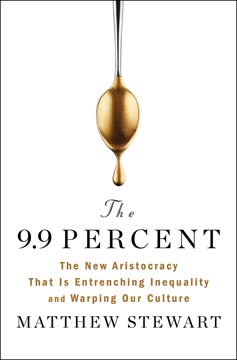Key Takeaways
1. The 9.9 Percent: A State of Mind, Not Just a Statistic
In this book, to repeat for emphasis, I use “the 9.9 percent” to describe a form of life rather than a set of people identified by their supposed net worth.
Defining the 9.9%. The book introduces the "9.9 percent" not merely as a statistical bracket of wealth (households with $1.2 million to $20 million in net assets), but as a pervasive "state of mind" and a "form of life" that shapes American society. This group, comprising professionals, mid-level bankers, small business owners, and retirees, believes deeply in the merit myth—that their success is proof the system works. They are largely white, lucky to live in America (which is exceptionally unequal), and often inherit wealth.
The Real Inequality. While "We are the 99 percent" is a popular slogan, it misrepresents the true scale of wealth concentration. The top 0.1 percent of households have captured nearly all the increase in wealth over the past fifty years, tripling their share to almost a quarter of the nation's economic value. The bottom 90 percent, conversely, has seen its share decline significantly, now owning roughly the same aggregate wealth as the top 0.1 percent. This leaves the 9.9 percent in a precarious middle, pulling away from the bottom but falling far behind the very top.
Complicity and Blindness. The 9.9 percent, though not the super-rich, are crucial to the system's perpetuation. They often overlook the causes of inequality and the ancient patterns they unknowingly retrace. Their "willful ignorance" is the "glue that holds the system together," making them unwitting accomplices in the triumph of the 0.1 percent and the fall of the 90 percent. This group's ideas have become the "ruling ideas of American society," even for those who don't possess the wealth to be members.
2. Parenting as a Weapon in the Inequality War
Supreme parenting is very simply what parents do when life in society becomes radically unequal.
The Parenting Paradox. Modern "supreme parenting" has become an extreme sport for the 9.9 percent, characterized by intense investment in children's activities, expensive enrichment, and a relentless pursuit of "perfection." Parents, like "Menlo Mom" seeking a decathlon-trained nanny with MBA-level skills, are stressed and unhappy, yet believe they "must do it all" and that their child's success is a direct measure of their own merit. This phenomenon is not confined to the wealthy, as ideals of "time-intensive, child-centered parenting" are now nearly universal.
An Inheritance Mechanism. This hyper-parenting is a direct response to rising inequality, serving as a de facto "inheritance mechanism" to secure children's position in a steep economic landscape. As the gap between rich and poor widens, parents frantically invest to prevent their children from "tumbling down the cliff into a lifetime of pouring Frappuccinos." This is reflected in the "Great Gatsby Curve," where higher inequality correlates with lower intergenerational mobility, particularly at the top and bottom deciles.
Devaluation of Care. The rise of supreme parenting coincides with a devaluation of care work, historically performed by women. As women entered the paid workforce, care work remained unpaid, forcing families to work more jobs for stagnant median incomes. This creates an exploitable pool of overwhelmingly female laborers, allowing the 9.9 percent to outsource domestic and childcare responsibilities while maintaining the illusion of "having it all." Solutions like adequate family leave, public childcare, and universal preschool, though obvious, are resisted due to entrenched interests.
3. Marriage and Family: Luxury Goods in an Unequal World
The bottom line is that rising inequality, through innocuous mechanism of assortative mating, and abetted with structural economic shifts that are themselves the consequence of inequality, has turned marriage and a stable family life into a luxury good.
Assortative Mating's Rise. "Assortative mating"—where like mates with like—is increasing directly with rising inequality. The greater the economic gap, the higher the reward for marrying well and the harsher the penalty for choosing love over money. This leads to elite college graduates disproportionately marrying each other, as seen in "Princeton Mom's" advice and New York Times wedding announcements.
The Marriage Divide. This trend sorts some people into stable marriages and others out of them entirely. While college-educated individuals maintain high marriage rates, working-class and low-income adults have seen their marriage rates plummet. This is exacerbated by factors like declining manufacturing jobs and incarceration, which reduce the "marriage market value of young men." Consequently, single-parent households, predominantly female, face severe economic and social disadvantages.
Class and Gender Dynamics. The pursuit of "class" through marriage involves accumulating not just money, but also wit, erudition, manners, and powerful friendships. This form of wealth is often accumulated by "Ultramoms" who strategically manage their children's social and educational paths. Misogyny, far from being a relic of the past, is reinvigorated as a political force, exploiting gender anxiety to maintain economic order. Lasting gender justice, therefore, is inseparable from economic justice, requiring policies that value care work and provide decent jobs for all.
4. Education as a Toll Booth, Not a Ladder
Higher education in America is the toll booth for the American social class system.
The Great Reprivatization. The "Operation Varsity Blues" scandal exposed how wealthy families manipulate college admissions, highlighting that actual education is often secondary to securing a "narrative" or a spot. This reflects the "Great Reprivatization" of American higher education, a shift from the founders' vision of public investment and merit for common good to a system where education is a private good. State funding cuts, soaring tuition, and massive student debt have transformed universities into mechanisms for reproducing privilege.
Elite Toll Booths. Elite universities, despite their public subsidies (tax-advantaged endowments, research funding), act as "toll booths" for social class. They disproportionately admit students from the top income quintiles, with children of the top 1 percent being 77 times more likely to attend an Ivy-plus college than those from the bottom. This creates a system where the cost of education is "untethered from any educational reality," as access, not learning, becomes the most profitable product.
Erosion of Public Purpose. The focus on "practical" education for high salaries has diminished the humanities, while business disciplines surge. This divides the university system into an elite sector that encourages critical thinking and a mass sector that emphasizes vocational training. The "Wisconsin Idea"—that universities serve the public good—has been eroded by political agendas that prioritize "workforce needs" over broader societal benefit, ultimately weakening democracy and fostering ignorance.
5. Neighborhoods: Fortresses of Hoarded Opportunity
The great real estate game determines not just where people will sleep at night, but how much spare cash they will have under the mattress and what sort of challenges and opportunities they will face in the morning.
Real Estate as a Monopoly Game. Henry George's insight that "private property in land is robbery" resonates today, as real estate has become a primary engine of economic inequality. For the 9.9 percent, the "right home in the right neighborhood" is a self-branding exercise, a means of educating children, and a key investment strategy. In desirable areas, home values appreciate dramatically, allowing homeowners to accumulate wealth passively, akin to landing on "Park Place" in Monopoly.
The Housing Divide. This game, however, is rigged. In most U.S. markets, average wage earners cannot afford median homes, and prices outpace wages. Homeownership has become a privilege, with racial disparities stark:
- Black home values are lower simply because owners are Black, creating a "race dividend" for white neighborhoods.
- Renters, disproportionately people of color, face high costs and frequent evictions, leading to financial precarity.
- The "secession of the successful" sees affluent neighborhoods using zoning laws (NIMBYism) to curb growth and exclude others, concentrating opportunity.
Government's Role in Inequality. Government policies, far from being neutral, actively subsidize wealthy homeowners through:
- Mortgage interest deductions
- Capital gains tax exclusions on inherited homes
- Untaxed "imputed rent" (the value of living in one's own home)
These "invisible welfare systems" disproportionately benefit the 9.9 percent, transferring wealth from the poor to the rich and reinforcing segregation.
6. The Merit Myth: A Delusion Justifying Unearned Wealth
The merit myth—which ought to be carefully distinguished from the much more limited idea of genuine meritocracy—is the origin myth of the 9.9 percent.
Meritocracy's Distortion. While genuine meritocracy advocates for accountability and public scrutiny in power, the "merit myth" of the 9.9 percent asserts that wealth is distributed in exact proportion to individual talent and effort. This "brain-sweat" theory, promoted by figures like McKinsey consultants, is "manifestly preposterous," ignoring the abundance of "bozos" and the weak correlation between individual attributes (like IQ) and massive wealth.
The Orchid-Compost Paradox. The meritocratic system hothouses "orchids"—highly cultivated individuals with diverse talents—only to "stuff them into the compost piles of an extractive economy." Prestige, accumulated through mastering irrelevant skills (e.g., ancient philosophy for investment banking), becomes fungible. The extreme work ethic ("workism") of the 9.9 percent is often unproductive and performative, driven by an "absence-of-life test" that demands unconditional commitment, leading to self-subordination and anxiety.
The Iron Law of Merit. The book posits the "Iron Law of Merit": "The more that merit seems to matter, the less it actually explains." As inequality rises, the distribution of talent (bell curve) diverges from the distribution of wealth (power law). Humans, however, conflate effort with value, overestimating individual contributions and believing that microscopic differences in merit justify massive differences in reward. This delusion affects even those at the bottom, fostering a "slave morality" and making society unreasonable.
7. The Market Myth: Monopolies Masquerading as Freedom
The market myth, to give it a name, is one of the great opiates of the 9.9 percent.
Market's True Nature. The "market myth" claims that inequality is a natural outcome of a beneficent "free market" where money earned equals societal value. However, true markets require competition, perfect information, and rational actors, and are inherently leveling. The "free market" is a hypothetical construct, not a reality. Markets are tools, not sources of wealth, and can be used for exploitation, as seen in historical slave markets. Professions and management, in their ideal forms, are essential market regulations, not market forces.
The Euthanasia of the Market. The U.S. economy has undergone a "Cleveland Massacre" replay, with increasing market concentration across industries like telecom, pharmaceuticals, and tech. Companies like Google and Amazon wield monopoly power, stifling innovation and gouging consumers and suppliers. This "euthanasia of the American market" is not natural but a result of:
- Weak antitrust enforcement (e.g., Robert Bork's influence)
- Anti-labor policies (e.g., union busting, stagnant minimum wage)
- Tax cuts favoring capital over labor
These policies funnel wealth to the 0.1 percent and offer "consolation prizes" to the 9.9 percent.
The WACO System. The "wage-labor-corporate-ownership system" (WACO) is the core of modern exploitation. Corporations, acting as "sociopaths" with limited liability and legal mandates for self-interest, wield totalitarian power over employees. This inherent imbalance allows firms to "harvest the wealth that others produce," turning "firms into farms and their crop into people." The 9.9 percent, particularly "senior managers," become operators of this machinery, receiving a larger share of the "crop" while remaining part of it, perpetuating the delusion of upward mobility.
8. Health: A Privilege, Not a Right, in a Sick System
The impoverishment of the many is not an incidental effect of a system that redistributes resources upward; it is a necessary feature of the system.
Physiological Division. Just as in ancient civilizations where elites were physically distinct, modern inequality creates a "physiological division" in America. The 9.9 percent, like "Grace from Boston" with her Peloton, pursue fitness as a luxury good, embodying the "body delusion" that physical health is a measure of moral character. Meanwhile, stark life expectancy gaps exist across neighborhoods (e.g., 94 vs. 63 years in D.C.), and "deaths of despair" (opioids, alcohol, suicide) plague lower-income, less-educated white Americans.
Health Care as Disease Management. The U.S. health care sector, a cornerstone of the 9.9 percent, is a "disease management business" focused on making money, not saving lives. It is the most expensive system globally, yet underperforms in outcomes, with:
- Doctors and dentists earning double their international peers due to cartels.
- Hospital CEOs' compensation skyrocketing.
- High administrative costs and insurance complexities.
This system, which makes health coverage dependent on employment, traps workers in undesirable jobs and exacerbates health crises, as seen during the COVID-19 pandemic.
Poverty as Intrapersonal Violence. The book argues that "poverty is the name we give to this new, distinctively human form of intrapersonal violence." It's the "collateral damage of a war continued by other means," where disempowerment leads to chronic stress, disease, and premature death. The system ensures that "essential jobs are easy to fill if they are essential for survival," and "cures are sold at prices that make people sick enough to need them." The 9.9 percent lubricate this machinery, perpetuating the illusion that the 90 percent can achieve ease through harder work.
9. Racism: A System of Power, Not Just Bad Thoughts
Racism now, more than ever, is the kryptonite of the American political system.
The 9.9 Percent Theory of Racism. The prevailing view among the 9.9 percent defines racism as an individual state of mind, a legacy of the past, and a problem solved by "purity in thought." This theory, however, "actively blocks a clear view of the whole truth." While individual prejudice may be declining, racism is fundamentally a "system of organizing political and economic power," not merely a collection of personal opinions.
The Race Dividend. Racism generates a "race dividend"—a material premium for living in white neighborhoods or working in white occupations. This dividend is:
- Not universal "white privilege" but requires existing investment.
- Collected by individuals regardless of their personal prejudice.
- A transfer of wealth from one white pocket to another by destroying it in a Black pocket.
- Managed for growth, increasing with economic inequality.
This dividend perpetuates racial wealth gaps (Black households have 3 pennies for every white dollar) and resegregates schools and neighborhoods, even as white parents deny making racially motivated choices.
Weaponized Racism. Frederick Douglass's insight that racism is a "creature of the present" is crucial. The post-Civil Rights era saw the "racialization" of American politics, with the Republican Party consciously weaponizing racism to consolidate economic power. This strategy, which relies on "preposterous claims of white victimhood" and appeals to unreason, has made the rich richer and impoverished the "Trump counties" that represent a shrinking share of GDP. The 9.9 percent, despite their anti-racist rhetoric, play a vital role in sustaining this system by obscuring class divisions.
10. The Triumph of Unreason: Inequality's Political Weapon
The triumph of unreason is the crisis of American politics today.
Unreason's Political Roots. The current crisis of American politics is the "triumph of unreason," where lies overpower truth and facts are subjective. This is not a timeless human defect but a political achievement, as Aristotle noted that extreme inequality renders citizens unreasonable. Demagoguery thrives on inequality, appealing to passions, resentment, distrust, ignorance, and nihilism, leading to mutual destruction.
The Shuttlecock of Disinformation. American political discourse is not merely "polarized" but deeply asymmetrical, resembling a "shuttlecock." The right is a "hard red rubber ball"—compact, extreme, densely interconnected (e.g., Fox News), and impervious to outside influence. The left is a "clutch of feathers"—dispersed, diverse, and loosely interconnected. This asymmetry, the "ideological signature of inequality," is not due to technology or universal human traits, but to the unified purpose of money and its ability to promote unreason.
Treason of the Intellectuals. The intellectual vanguard of the 9.9 percent, exemplified by figures like Amy Chua, contributes to this unreason. They either actively serve authoritarian interests (like the Federalist Society) or retreat into relativism, sacrificing truth for the "appearance of objectivity" to maintain their prestigious positions. This "treason of the intellectuals" allows the Republican Party to deceive for inequality and risks turning the Democratic Party into a home for an affluent elite that ignores the economic roots of injustice.
11. Reclaiming the American Promise: Equality as the Foundation of Progress
The equality of the basic material conditions is and has long been understood as a natural right because it is both the basis of the creation of wealth in a society and the foundation of individual freedom.
Founders' Vision of Equality. America's founders, like Thomas Jefferson, recognized extreme economic inequality as a dangerous human problem, not a natural state. Influenced by the relative equality among white settlers, they advocated for progressive wealth and inheritance taxes, seeing "natural right" (freedom grounded in reason and mutual regard) as superior to "laws of property." Liberal democracy, in its original form, was conceived as a "truth machine" designed to hold power accountable to reason and ensure equal justice.
Inequality's Destructive Cycle. History shows that material equality precedes mental equality; progress is not inevitable but a political achievement. Inequality, however, distorts consciousness, leading to self-delusion and a politics of unreason. The "Great Stagnation" of ancient civilizations, marked by extreme inequality, demonstrates how diverting collective energy into incoherent projects (like pyramids or "life extension" for billionaires) destroys the foundation of wealth—human cooperation.
Path to a Just Future. To restore reason and justice, the book calls for:
- Tax Reform: Progressive wealth and inheritance taxes, eliminating regressive taxes and tax expenditures that benefit the wealthy.
- Market Liberation: Vigorous antitrust policy to break up monopolies, empowering workers through higher wages and collective bargaining, and redefining corporate governance to serve all stakeholders.
- Public Options: Universal access to health care, education, childcare, internet, and banking, recognizing these as public goods.
- Democratic Reform: Electoral college reform, voter protection, ending gerrymandering, and campaign finance reform to counter minority rule and plutocracy.
The 9.9 percent must shed their illusions, recognize their complicity, and understand that true happiness and freedom depend on acknowledging their "actual relations with other people and our place in nature."
Last updated:
Review Summary
The 9.9 Percent receives mixed reviews, with some praising its insightful analysis of inequality and the upper-middle class, while others criticize its scattered ideas and lack of solutions. Readers appreciate Stewart's witty writing style and historical context but debate the accuracy of his arguments. The book challenges meritocracy myths and explores how the 9.9% perpetuate systemic issues. Many find it thought-provoking, though some argue it oversimplifies complex topics. Overall, it sparks discussions about wealth, privilege, and societal structures in America.
Similar Books
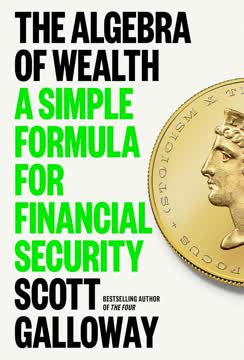
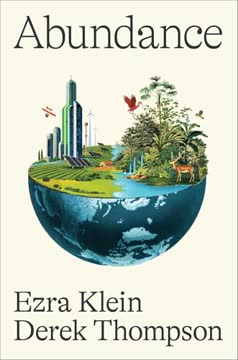
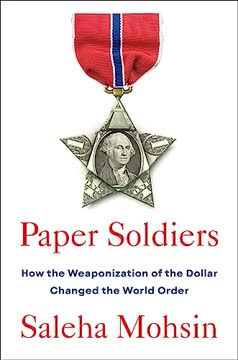
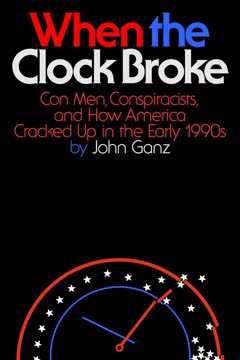
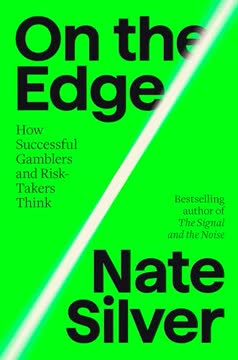

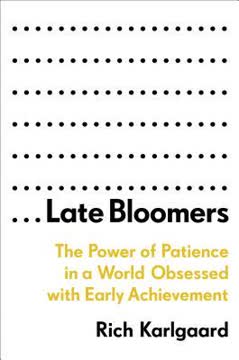
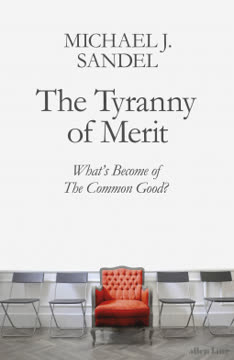

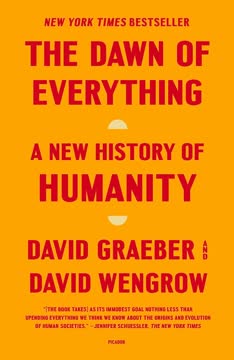
Download PDF
Download EPUB
.epub digital book format is ideal for reading ebooks on phones, tablets, and e-readers.
